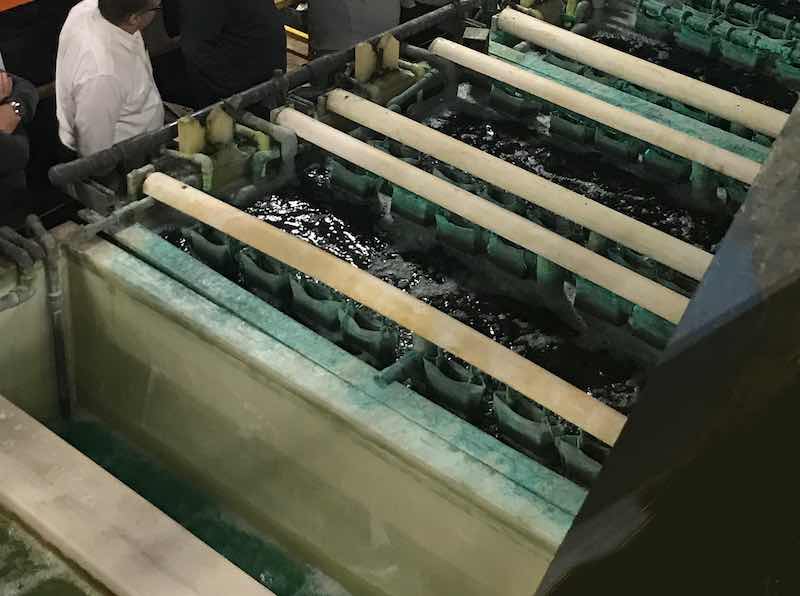Hooking up to your local community wastewater treatment system is becoming even more of a risk factor for your finishing and coating operations.
Getting an EPA permit to discharge to your community brings with it a whole gambit of issues, not the least of which is that you almost give carte blanc to the EPA and local municipality to perform inspections when they want, as well as open your shop up to potential harm from private environmental groups which of late have been scouring public records to find those shop who may go over some of their limits.
Take, for example, an environmental non-profit group that is targeting more California finishing operations with alleged violations of the state’s safe drinking act. The Center for Environmental Health (CEH) sent legal notices to five metal plating facilities on June 12 in Los Angeles County, claiming the facilities are discharging toxic PFAS chemicals into groundwater. That process is allowed by state law in California, and the shops that get targeted must then come to a settlement agreement with the non-profit that can be not only costly but also may lead to embarrassment as your shop becomes known as a “polluter” that opens yourself up into even more unneeded notoriety and ridicule. It’s a no-win situation.
This month’s cover story details how a shop in Milwaukee went to a zero discharge system many years ago as a way to un-hook itself from the local municipalities wastewater treatment system by spending hundreds of thousands of dollars to treat its own waste. The shop owner details how they did it and what the lingering effects on the process were, although even disconnecting from the municipality didn’t spare them the hardship of dealing with the local officials and others.
After they went to zero discharge, they got into a “discussion” with their local sewer district and EPA about having no discharge.
“They first stated that we would need to be registered as a ‘waste treatment facility’ if we did this, which at the time would have meant a $40,000 annual fee or we needed to discharge some water,” Jaime Maliszewski says. “When asked why, they said if we went zero discharge, they would not know how to regulate us. When further questions were asked, they stated they needed a way to bill us.”
His shop ended up agreeing to release 10,000 gallons a day of treated water, and they ended up paying those additional costs.
A no-win situation, right?
The other reason for zero discharge is the new surveys that the U.S. EPA is sending out — with a follow-up inspection of your facility — to check on whether there is PFAS in your system. This is a very dicey area for most platers, who may not be using any PFAS in their processes but might be cleaning it off their customer parts when they get them from a manufacturer.
Look, wastewater treatment isn’t one of the more talked-about subjects in finishing — and shops don’t look at it as a moneymaker for them — but the importance is becoming more relevant as time goes on.
Zero discharge may not cure all the ills your shop may have, but it is certainly something to consider.




 Tim Pennington is Editor-in-Chief of Finishing and Coating, and has covered the industry since 2010. He has traveled extensively throughout North America visiting shops and production facilities, and meeting those who work in the industry. Tim began his career in the newspaper industry, then wound itself between the sports field with the PGA Tour and marketing and communications firms, and finally back into the publishing world in the finishing and coating sector. If you want to reach Tim, just go
Tim Pennington is Editor-in-Chief of Finishing and Coating, and has covered the industry since 2010. He has traveled extensively throughout North America visiting shops and production facilities, and meeting those who work in the industry. Tim began his career in the newspaper industry, then wound itself between the sports field with the PGA Tour and marketing and communications firms, and finally back into the publishing world in the finishing and coating sector. If you want to reach Tim, just go 





















